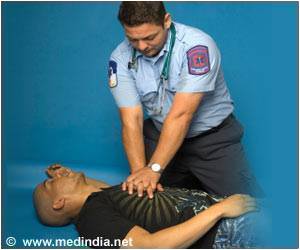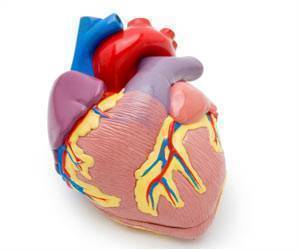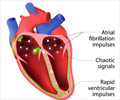
"Large population studies of adult patients with lone AF have found that the cumulative rate of progression to permanent AF is 19% at ten years and 29% at 30 years, but there are no similar data published for younger patients. Longer term follow-up studies of pediatric patients with lone AF are required to better understand the natural history specific to this population," says lead investigator Shubhayan Sanatani, MD, Associate Professor, Division of Pediatric Cardiology, University of British Columbia, Vancouver.
Lone AF is defined as occurring in patients with AF who are less than 60 years of age and do not suffer from other forms of cardiovascular disease or hypertension. Lone AF in younger patients is rare and constitutes less than 5% of all types of AF.
Four centers from the Canadian Pediatric Electrophysiology Working Group (Vancouver, Toronto, Edmonton, and Ottawa) identified patients eligible for the current study, which resulted in the largest cohort of pediatric lone AF to date. Investigators reviewed records from 1996 to 2011 and identified 42 patients with a first episode of lone AF. Four patients were later categorized as having persistent AF. Patients with AF in the setting of thyroid disease, ventricular pre-excitation, coexisting congenital heart disease, or a history of cardiac surgery were excluded. Thirty-one of the patients were male, and the median age at first presentation was 15 years.
The investigators sought to describe the clinical characteristics, management strategies, and recurrence rates and to identify factors that might predict AF recurrence. They found that AF recurred in 15 of 38 patients (39%) and the time to estimated recurrence was 19 months. Factors predictive of recurrence included longer duration of the initial episode and the reporting of frequent palpitations (daily or weekly) after the initial episode. Three patients had AF-related complications.
There was a wide variation in management strategies used in both the acute treatment and outpatient management of AF, particularly in the treatment of the initial presenting episode.
Advertisement
"In conclusion, although it appears to be a rare disease in pediatric patients, lone AF does carry a substantial burden of symptoms and has a high recurrence rate," comments Dr. Sanatani. "Our reported rate of recurrence of 39% is important when counseling pediatric patients and their families on the expected course and treatment goals. The specific management strategies in pediatric patients have still not been well defined, but there is a need for an organized and consistent approach. Pediatric practice should be in alignment with published adult guidelines. Long-term follow-up studies and larger series of pediatric patients with lone AF are required to better understand the natural history," he concludes.
Advertisement














